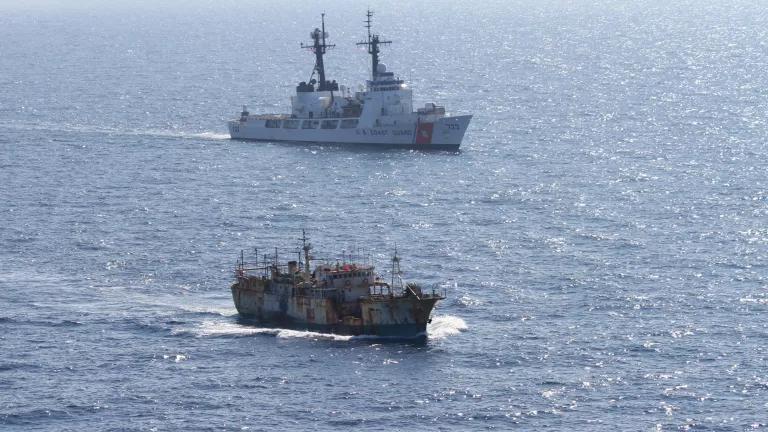IUCN Misses the Mark on Diseases from Wildlife Trade
A new study highlights the need to prevent disease outbreaks before they start, while the International Union for Conservation of Nature (IUCN) makes a dangerous case for business as usual.

Co-authored by Tanya Sanerib, International Legal Director at the Center for Biological Diversity.
Two new reports were recently published on steps that can be taken to prevent future pandemics. One is a peer-reviewed study by 20 global experts in the fields of medicine, biology, conservation, and economics. That study reinforces what most people impacted by COVID-19 already know: We should invest heavily in reducing the risk of future pandemics, understanding that even small risks can have enormous consequences.
However, the other study, written by two people commissioned by the International Union for Conservation of Nature’s (IUCN) Species Survival Commission (SSC), arrives at a much different, outlier conclusion. They make the case instead for a cautious approach that does not upset business as usual when it comes to wildlife.
But we know where business as usual has already gotten us: millions of people dead, trillions of dollars lost, and the continuing exploitation of nature that increases the risk of future pandemics. And after two years of seeing neighbors get sick and die, life-improving medical procedures postponed, children missing school, and economic devastation, we don’t need partial interventions that leave preventable risks on the table.
No. As global experts agree, we must act now to eliminate as much risk of future pandemics as possible.
The new epidemiology review published in the journal Science Advances (“The costs and benefits of primary prevention of zoonotic pandemics”) underscores the value of preventing the next COVID-19-like pandemic, not just dealing with it after it emerges. The study explores practical actions we can take now, including efforts to reduce the chances of pathogen spillover, like limiting wildlife trade and reducing deforestation. The costs of these preventative actions, the study concludes, are 20 times less than the lives lost each year to emerging viral zoonoses.
“If Covid-19 taught us anything, it is that we absolutely cannot rely on post-spillover strategies alone to protect us,” said Aaron Bernstein of the Center for Climate, Health and the Global Environment at Harvard University, who led the study, in The Guardian. “Spending only five cents on the dollar can help prevent the next tsunami of lives lost to pandemics by stopping the wave from ever emerging, instead of paying trillions to pick up the pieces.”
As noted by Mongabay.com, the study “emphasizes the need to stop pandemics before they start, stepping beyond the quest for new vaccines and treatments for zoonotic diseases to also aggressively fund interventions that prevent them from happening in the first place.” Those interventions include addressing wildlife trade and deforestation because they are among the key drivers of pathogen emergence.

In stark contrast, however, a recent IUCN publication downplays the threat of zoonotic disease from wildlife trade, implying that wildlife trade is not worth focusing on when discussing pathogen risk. The authors attempt to supplant the judgement of governments and democratically accountable public health institutions, like the World Health Organization, with their own judgements, concluding that “it would be unjustified” to implement “measures, such as broad-ranging bans, on wildlife trade (or use and trade. . . or specific groups of species in trade (e.g., mammals and birds) for reasons of disease risk.” According to the authors, there is no justification for sovereign governments to ban wildlife trade and wildlife markets—despite the fact that global and national health authorities have urged countries to do exactly that to reduce the risk of another global health catastrophe.
Worryingly, the IUCN document seems to conflate disease emergence with re-emergence, thus shifting the focus from wildlife and nature, from which novel pathogens are most likely to emerge, to industrial domestic livestock and agricultural practices, from which known pathogens are more likely to emerge. “Wildlife an infrequent source of human illness: IUCN report” was even the headline of IUCN’s press release when the document was published, which went on to say: “A new IUCN report by the Species Survival Commission finds that contact with and trade of domesticated animals and their products are by far the most frequent source of recurring human illness.”
The reality is we need to worry about both, or we risk reliving COVID-19 and its devastating consequences over and over again. The Science Advances study makes this point as well: “Prominent policymakers have promoted plans that argue the best ways to address future pandemic catastrophes should entail ‘detecting and containing emerging zoonotic threats.’ In other words, we should take actions only after humans get sick. We sharply disagree,” the Sciences Advances study states.
Yet, IUCN is backing a document that can be used by people profiting from wildlife exploitation and trade to continue business-as-usual activities that are driving the biodiversity crisis and increasing the risk of future pandemics. It flies in the face of what the Science Advances study and numerous other expert groups have concluded. The experts make clear that preventing novel disease emergence, in part by addressing wildlife trade, will cost far less in terms of human lives and livelihoods than focusing only on known pathogens and post-pandemic responses.
It’s a shame that IUCN went down this path, instead of embracing a bold and ambitious approach to limiting the threat of future pandemics. NRDC, the Center for Biological Diversity, and 23 other members of IUCN sent a letter to IUCN President Razan Al Mubarak and the IUCN Council asking for delay in the document’s publication until significant concerns about the document were addressed. IUCN ignored our letter and decided to publish anyway and is now backing unproductive narratives that wildlife exploitation and trade are no big deal and not worth prioritizing to prevent the next pandemic.
Fortunately, many of the IUCN document’s conclusions are not shared by global experts, like those who conducted the Science Advances study, IPBES, WHO, UNEP, and numerous countries that have taken steps to limit the threat of spillover events from wildlife trade and consumption. It’s an outlier and should be treated as such.
We hope the IUCN Council still takes the time to review the document, assess the situation, and decide that a much more balanced approach should be taken. Such an approach should align with IUCN’s mission, conservation objectives, and public positions on the threat that wildlife exploitation and trade poses for the planet and for our own lives.



